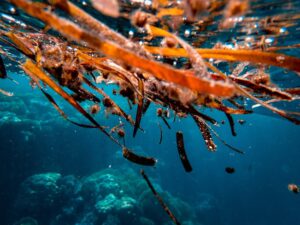Imagine a snake. But not just any snake. A 4-metre-long python. A snake so big it can catch, asphyxiate and swallow a rock wallaby whole. And now ponder how such a creature could be classed as ‘vulnerable’.
The Pilbara olive python receives such a conservation rating not for its meek manner, but for its endangered status.
It occurs nowhere else in the world but the Pilbara.
And scientists have no idea how many exist in the wild. Is it a few hundred or thousands?
Cryptic creatures
Why don’t we know more? Surely such a big snake would be easy to spot?

Not so, says Department of Biodiversity, Conservation and Attractions scientist David Pearson.
First, they are nocturnal. Second, they are well camouflaged. And third, they don’t get out much, spending much of their time under grass tussocks and in caves and crevices.
“You could have a 4m-long python coiled beside you in the grass and you wouldn’t see it,” David says.
Learning the hard way
David learned of the snakes’ cryptic nature the hard way.
Some 15 years ago, he charged north to the Pilbara and recruited a band of volunteers to locate and monitor populations of the Pilbara olive python.
How hard could it be? They’d just walk alongside river banks and easily find such large pythons.
Except, after a week of searching, they’d failed to encounter a single python.

Still, word of David’s interest in the pythons spread.
He began to gather a network of python lovers.
Park rangers joined the search, as did community volunteers.
People from Tom Price, Pannawonica, Dampier, Karratha and Millstream National Park got on board.
They began reporting sightings of the pythons as they encountered them.
David would anaesthetise the creatures they caught and surgically implant radio transmitters about the size of your thumb into their sleek bodies.
The snake hunters could then track the movement of each snake over the next couple of years.

Uncovered lifestyle
Slowly, the transmitters helped to paint a picture of the snakes’ lifestyle.
David’s team discovered the snakes had distinct home ranges, and they worked out how infrequently the snakes breed (once every 2 or 3 years).
And, at Millstream (120km southeast of Karratha), they discovered that male and females snake would congregate on cliff faces to mate.
The snakes would enjoy several months of riverfront views before the females would retreat to give birth.
They’d lay their eggs then, and like most pythons, incubate the eggs for about 2 months by coiling around the eggs and shivering, if necessary, to maintain a constant temperature.
Doing it once every 2 or 3 years ain’t going to cut it
The python’s low reproduction rate is one of the reasons for its vulnerable status.
So is habitat reduction and degradation due to mining, pastoralism and large wildfires, declining numbers of its prey species such as quolls and wallabies and its vulnerability to being run over.

To better understand the risks facing Pilbara olive pythons, David would love to learn more about where the snakes lay their eggs and what becomes of their young.
Plans are under way to begin a study on the snakes’ reproduction, the survival of juvenile pythons and their recruitment to the adult population.
Sliding into hearts
David says the previous work and community involvement had one unexpected benefit—the gentle giant captured people’s imaginations.
“It was incredible to see the impact on the community goodwill towards the snake,” David said.
“Mine-site employees would stop if they saw a python on the road and ring in to have it shepherded off. It really lifted their profile.”









